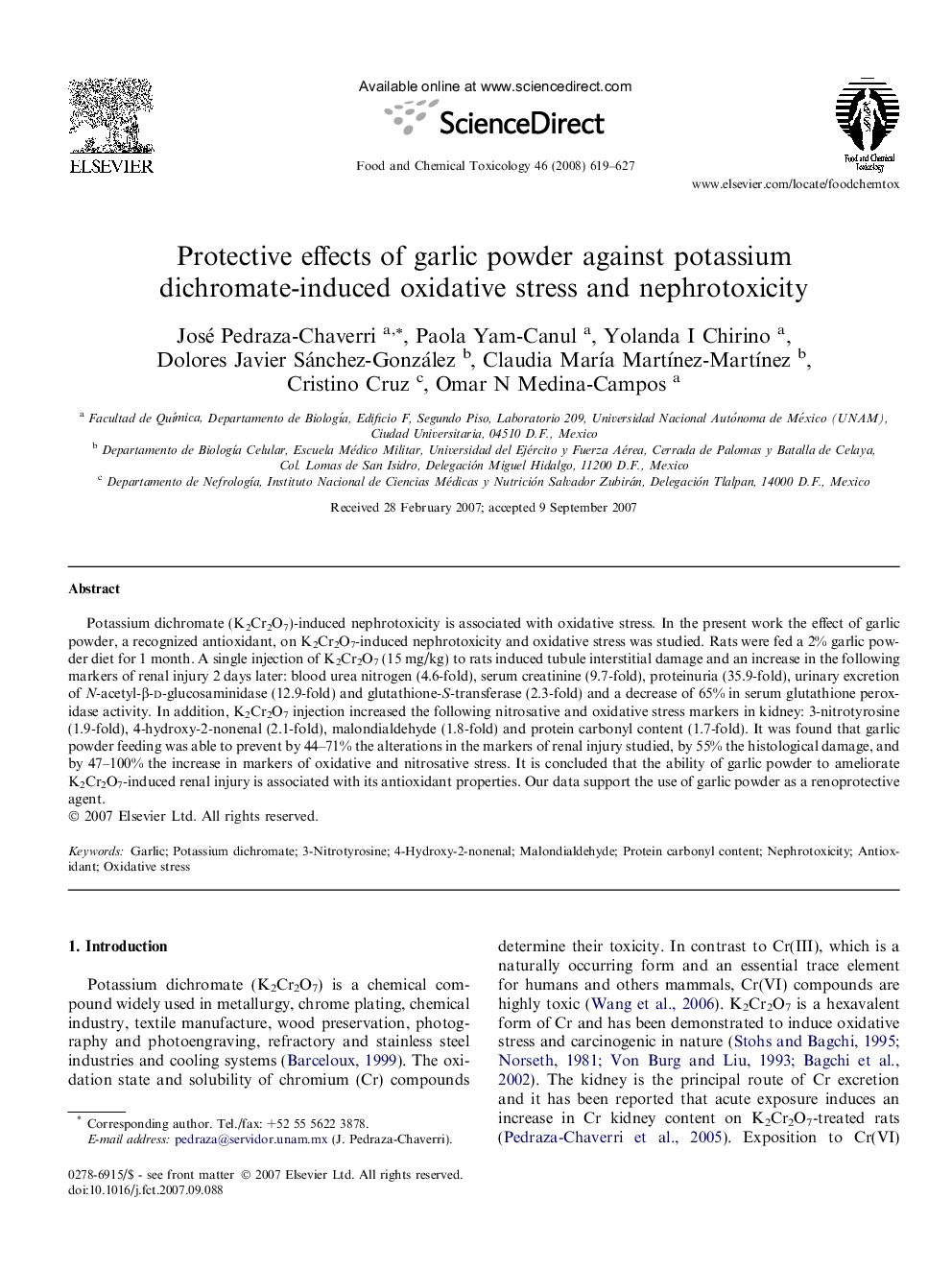| Article ID | Journal | Published Year | Pages | File Type |
|---|---|---|---|---|
| 2587108 | Food and Chemical Toxicology | 2008 | 9 Pages |
Potassium dichromate (K2Cr2O7)-induced nephrotoxicity is associated with oxidative stress. In the present work the effect of garlic powder, a recognized antioxidant, on K2Cr2O7-induced nephrotoxicity and oxidative stress was studied. Rats were fed a 2% garlic powder diet for 1 month. A single injection of K2Cr2O7 (15 mg/kg) to rats induced tubule interstitial damage and an increase in the following markers of renal injury 2 days later: blood urea nitrogen (4.6-fold), serum creatinine (9.7-fold), proteinuria (35.9-fold), urinary excretion of N-acetyl-β-d-glucosaminidase (12.9-fold) and glutathione-S-transferase (2.3-fold) and a decrease of 65% in serum glutathione peroxidase activity. In addition, K2Cr2O7 injection increased the following nitrosative and oxidative stress markers in kidney: 3-nitrotyrosine (1.9-fold), 4-hydroxy-2-nonenal (2.1-fold), malondialdehyde (1.8-fold) and protein carbonyl content (1.7-fold). It was found that garlic powder feeding was able to prevent by 44–71% the alterations in the markers of renal injury studied, by 55% the histological damage, and by 47–100% the increase in markers of oxidative and nitrosative stress. It is concluded that the ability of garlic powder to ameliorate K2Cr2O7-induced renal injury is associated with its antioxidant properties. Our data support the use of garlic powder as a renoprotective agent.
